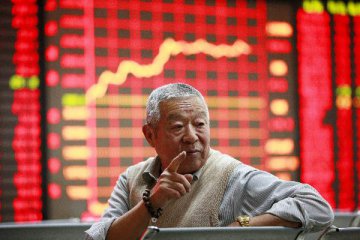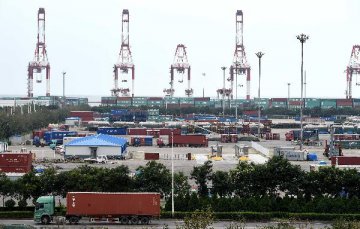
Rapid, breakneck and even reckless: Just a few of the words commonly used to describe China's growth in the last few decades, but for the next five years, the word on every China watchers's lips will simply be "green".
Green growth is being touted as the solution to the heavy pollution brought by industrial expansion and the best way to deliver on China's climate change commitments.
In the 13th Five-Year Plan, green growth will be one of five key development concepts, along with innovation, coordination, opening up and sharing.
Traditional manufacturing must clean up its act. From now on, low-carbon production will come through better technology. Carbon emissions are to be actively monitored and controlled, especially among the big polluters -- electricity generation, steel making, construction materials and the chemical industry.
All these changes will come at a cost, and to sweeten the pill, a green development fund will be established. "Following the green path is inevitable after decades of social and economic development.
It is crucial for the country in avoiding the middle-income trap and improving competitiveness," said Pan Yue, vice minister of environmental protection. China's environmental protection industry grew by around 20 percent each year from 2011 to 2015, with more than 500 billion U.S. dollars injected into the sector during that period.
During the period of 13th Five-Year Plan, the Ministry of Environmental Protection expects a further two trillion yuan (300 billion U.S. dollars) to flood in each year.
China's environmental endeavors are already showing results. In 2014, energy consumption and carbon dioxide emissions per unit GDP were down by 29.9 and 33.8 percent respectively from the 2005 level.
But climate change, especially climate change mitigation, are international issues. As China cleans the air and water, the effects will be felt around the world.
China has many climate obligations, including introduction of a national carbon cap-and-trade system before 2018; 20 billion yuan in promised aid to other developing countries to help them adapt to and combat climate change; and cutting CO2 emissions per unit of GDP by at least 40 percent from the 2005 level by 2020, and at least 60 percent by 2030.
Rachel Kyte, World Bank Group vice president and special envoy for climate change was extremely positive when describing the announcement of China's climate aid to developing countries as "an extraordinary new development."
She went on to describe China as in the leadership position in helping the global economy move to low-carbon growth, praising the plan for a national emissions trading system.
"This will immediately create the largest carbon market in the world," she said, "Other carbon markets will want to link with China."
Focus on 13th Five-Year Plan > Analysis and Comment
























Latest comments